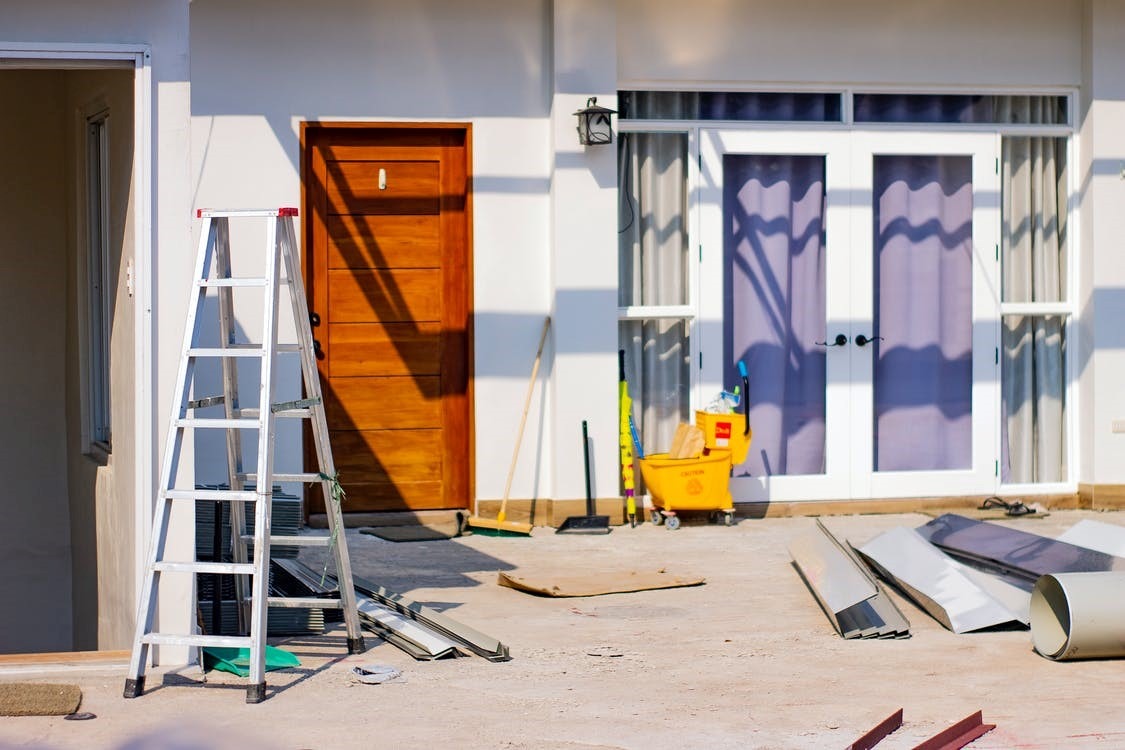Are you planning to revamp your home with a massive transformation that will improve your life quality? A renovation is an excellent idea to boost your property’s market value, preserve its structure, and enhance your living space.
But have you ever thought of using a renovation as an opportunity to make your environment healthier?
Our environments are riddled with all kinds of hazards and health risk factors. These include mold, mildew, asbestos-containing products, lead, water damages, and more.
Dismantling the structure and rebuilding presents a golden opportunity to remove all toxins and hazardous material.
Keep reading to explore some crucial things you must eliminate from your home without delay.

Was your property constructed before the 1980s? Before the 80s, asbestos was a prominent material used in construction materials and products.
After scientific research highlighted its health risks, the use of asbestos-containing products was banned.
Over the years, its use declined significantly; however, it is still present in most structures.
Asbestos is typically present in insulation layers added to public buildings, residential properties, schools, and industrial construction.
Contractors would add asbestos to plasters to strengthen the ceilings and walls.
Moreover, it is typically present in ceiling tiles, caulking, concrete blocks, roof shingles, vinyl flooring, and electrical wiring.
But why is asbestos so bad for our health? You see, asbestos fibers are airborne, and when inhaled, they pool up in the lining of the heart, lungs, or stomach.
These airborne fibers give rise to severe lung scarring, alongside setting the stage for life-threatening diseases.
Asbestos exposure causes lung cancer-mesothelioma, alongside asthma and asbestosis.
We strongly urge our readers to learn more about mesothelioma prognosis to understand the urgency of eliminating asbestos-containing products.
When it comes to fighting cancer, prevention is truly the best, wisest remedy.
And children are at the most considerable risk of contamination as they are much more vulnerable than grown adults.
It’s crucial to engage asbestos removal experts as mishandling can cause the airborne fibers to mingle with your environment.
This job demands precision and accuracy, and experts will bring in specialized equipment to ensure safety.
Asbestos isn’t the only construction hazard in buildings constructed before the 1980s.
Properties built during the 60s and 70s involved various chemicals, toxins, and environmentally hazardous compounds.
These potentially toxic substances include lead-based paints on the exterior and interior walls.
Suppose your home was constructed before 1975. In that case, it’s crucial to inspect the property for lead-based paint.
Lead poisoning is a severe health hazard, especially for families with children or pregnant women. But, what exactly is the problem with lead?
Lead is a dangerous metal that can lead to damaging health concerns when inhaled or ingested.
It’s common for lead particles to drop off into our food or lead-containing dust to penetrate our environment.
It doesn’t create any risk factors if the walls are in pristine condition.
However, once the paint starts chipping and the surface breaks, it leads to scores of health problems.
You see, flakes of lead paint can end up in your food, bedding, clothes, and surfaces around the house.
It’s wise to remove all lead-containing paint for a safer and child-proofed home.
Read Also:
Homeowners undertaking a renovation should inspect their properties for signs of mold growth.
Here’s another elimination process that you must tackle for a safe and healthy environment.
Mold is surprisingly common in residential neighborhoods, and it thrives in settings with excessive moisture.
Do you have a leaky roof or a long-standing plumbing concern that causes excessive moisture? If yes, then the mold is most likely to thrive and grow in your home.
It will likely originate in windows, roofs, basements, attics, and areas exposed to flooding.
Mold also grows on wooden furniture and fixtures, wallpaper, drywall, carpets, and ceiling tiles.
It takes a thorough and detailed home inspection to identify all areas where mold is thriving in your property.
Mold elimination is crucial to preserve your property against extensive damages and exuberantly costly repairs.
More importantly, mold can contribute to various health concerns, such as asthma, skin irritation, coughing, and throat irritation.
Mold exposure can also cause nasal congestion, eye-related worries, and severe respiratory troubles.
Use this renovation as an opportunity to rid your home clean of all junk, debris, and dust.
It’s time to rid your garage of all unwanted items and belongings that collect dust and create respiratory hazards.
These items vary from homeowner to homeowner, as some hold onto unwanted belongings while others hoard inherited heirlooms.
Items and furniture that do not serve a purpose in your life take up your space without offering any utility.
Eliminating the junk and clutter in your lawn, attic, and garage will help you find new ways to repurpose your space.
Imagine transforming the garage into an indoor-outdoor playing area for the kids.
Or perhaps, you’d like to declutter the attic and transform it into a fitness studio for the family.
Undoubtedly, the environment we live in has a profound impact on our health and wellbeing.
No parent wants their child to grow in a home brimming with respiratory hazards, like asbestos or mold.
These hazards often go unnoticed because they hide behind sneaky layers of insulation and cement.
A renovation is a perfect opportunity to dismantle and eliminate these hazards from their roots.